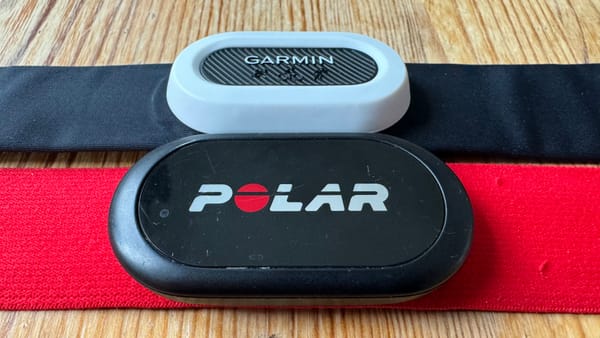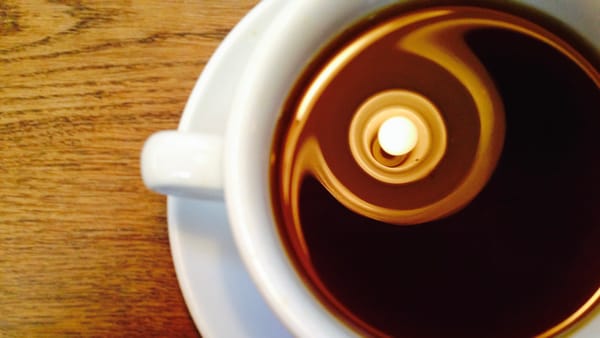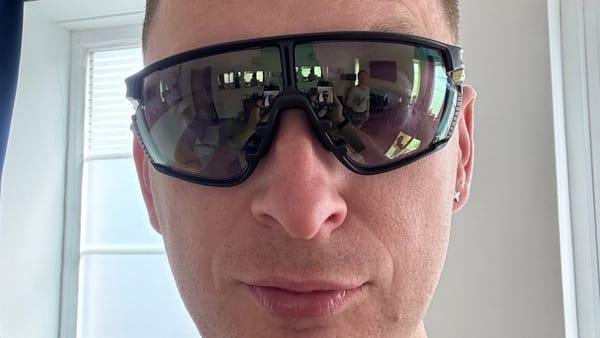HRV: Garmin versus Ōura
A 14-day comparison of Garmin’s and Ōura’s HRV values.
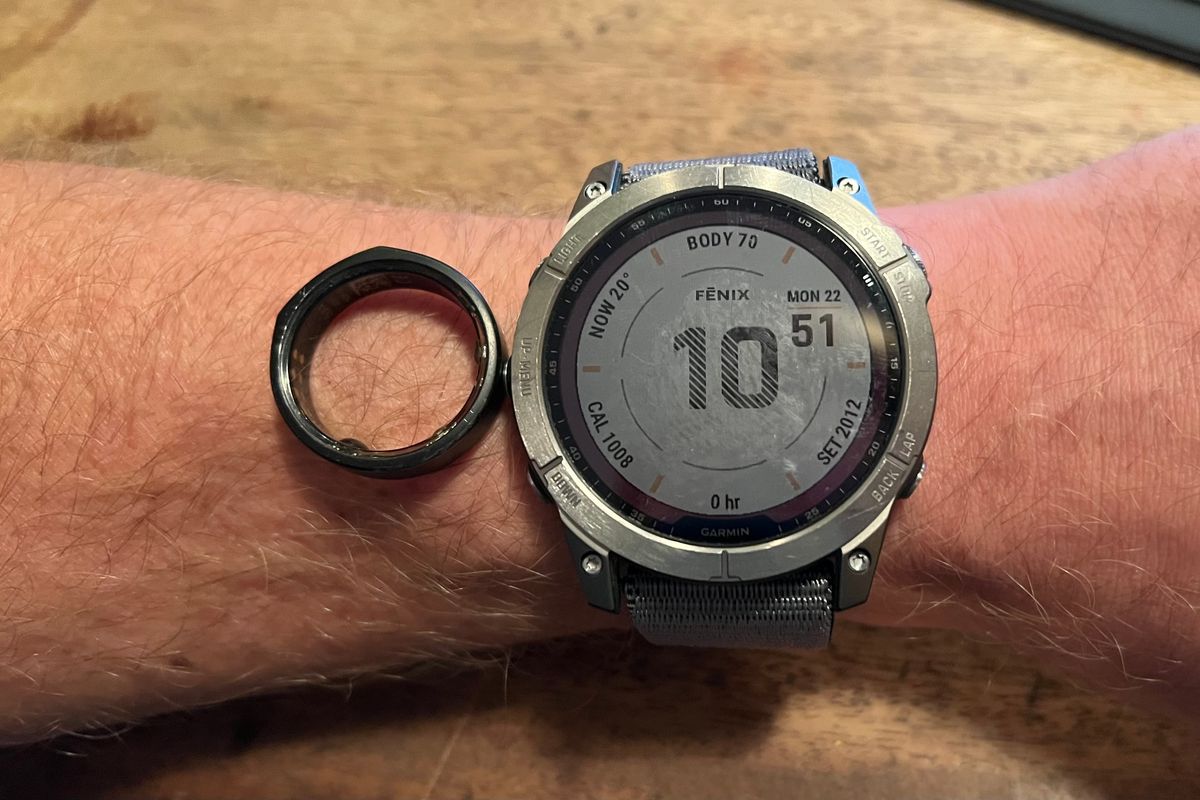
Starting with 2022's 255 and 955 watches, Garmin has hadded HRV tracking to the battery of data generated from the optical sensor on their watches. This is available on 6 and 7 series watches, too, really bringing HRV trend lines to the masses.
I find this an intersting comparison as Marco Altini, who I feel really started the 'at home HRV movement' with his app HRV4Training, has contributed to Oura's capabilties. His contributions, and several years of using HRV4T prior to using an Ōura, have given me a lot of confidence in their platform, more so than Whoop. Garmin is probably the biggest/best known fitness tracker maker, and is the owner of First Beat, who have spent years analysing HRV and HR to produce training guidance that many athletes rely on.
I've been running the beta of Garmin's HRV software on my 7 series watch for about three weeks, and comparing it to my Oura (ultimately with a view to phasing the Oura out, despite it's otherwise excellent tracking, and tracking of body temperature). Each morning, a graph is rendered by both, showing average and high values, shown below (Oura on the left/first 79ms, Garmin on the right/second 76ms).
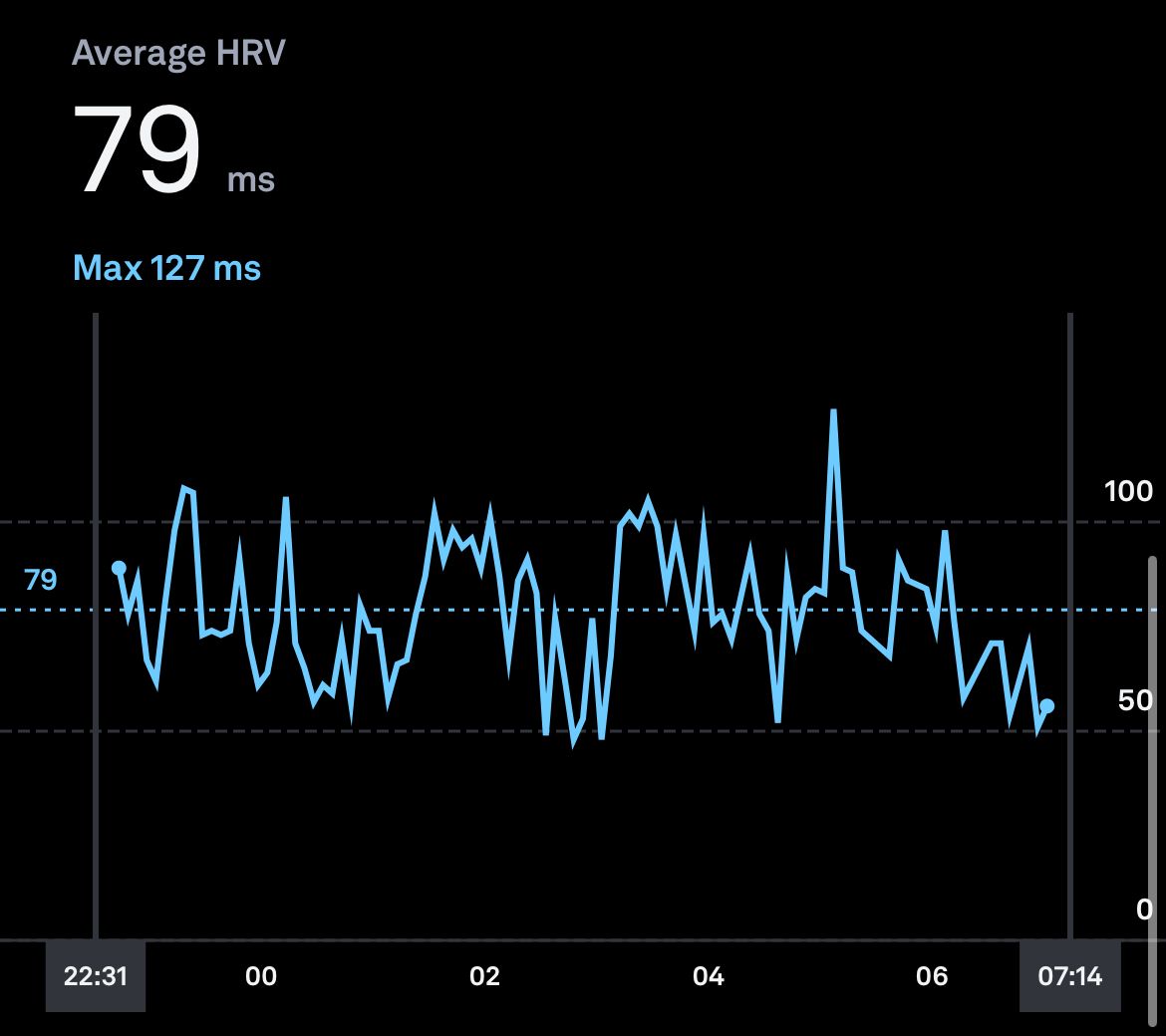
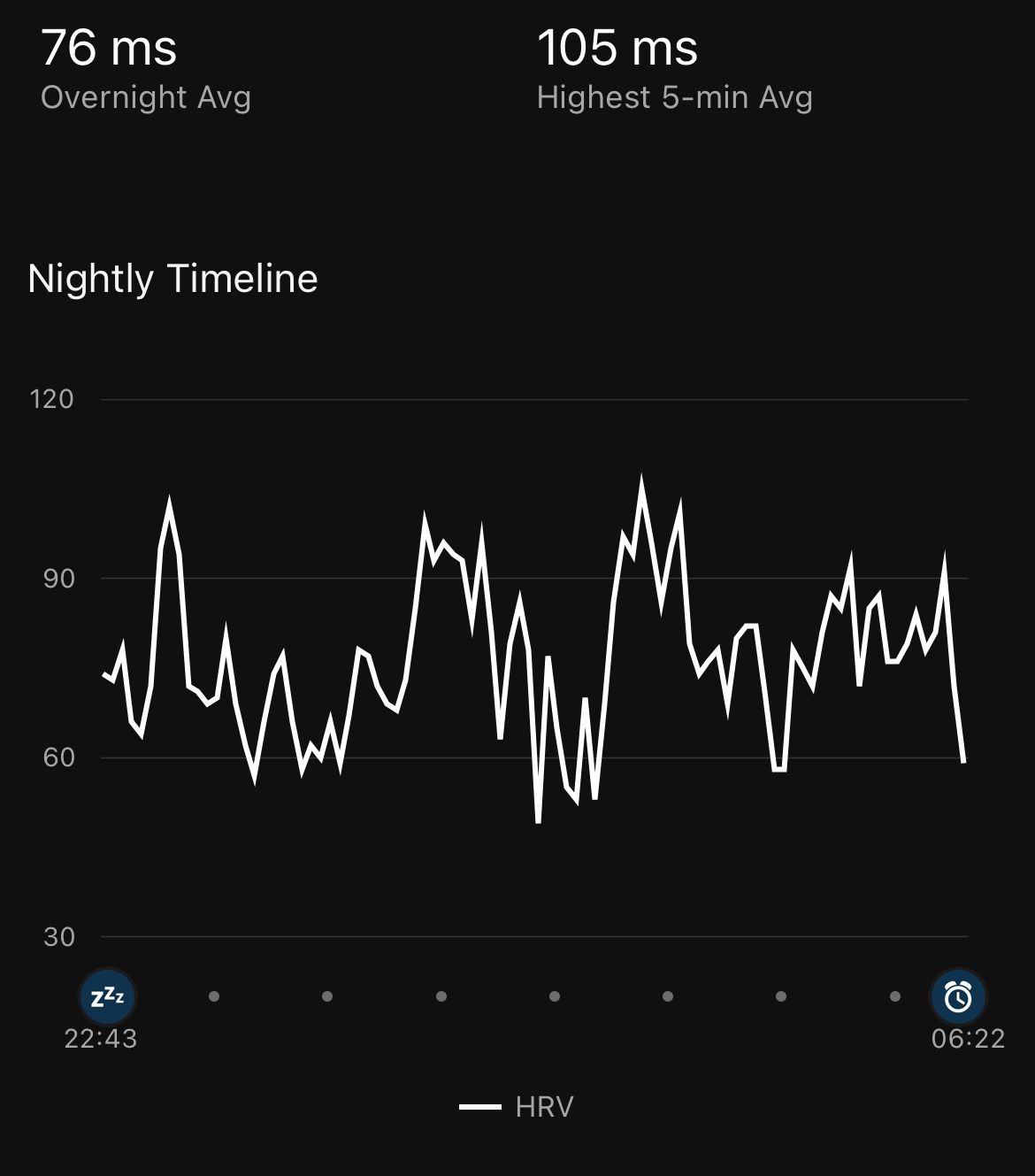
Lazy analysis, but the graphs exhibit similarity, something that is reflected across most of the days I've been wearing both. Talking of wearing both, my Garmin has been on my left wrist, and my Oura v3 on my right index finger. The Garmin strap has mostly been the Ti bracelet, with a few days of their nylon loop strap. Graphing out the 14 days of averages and highs looks like this:
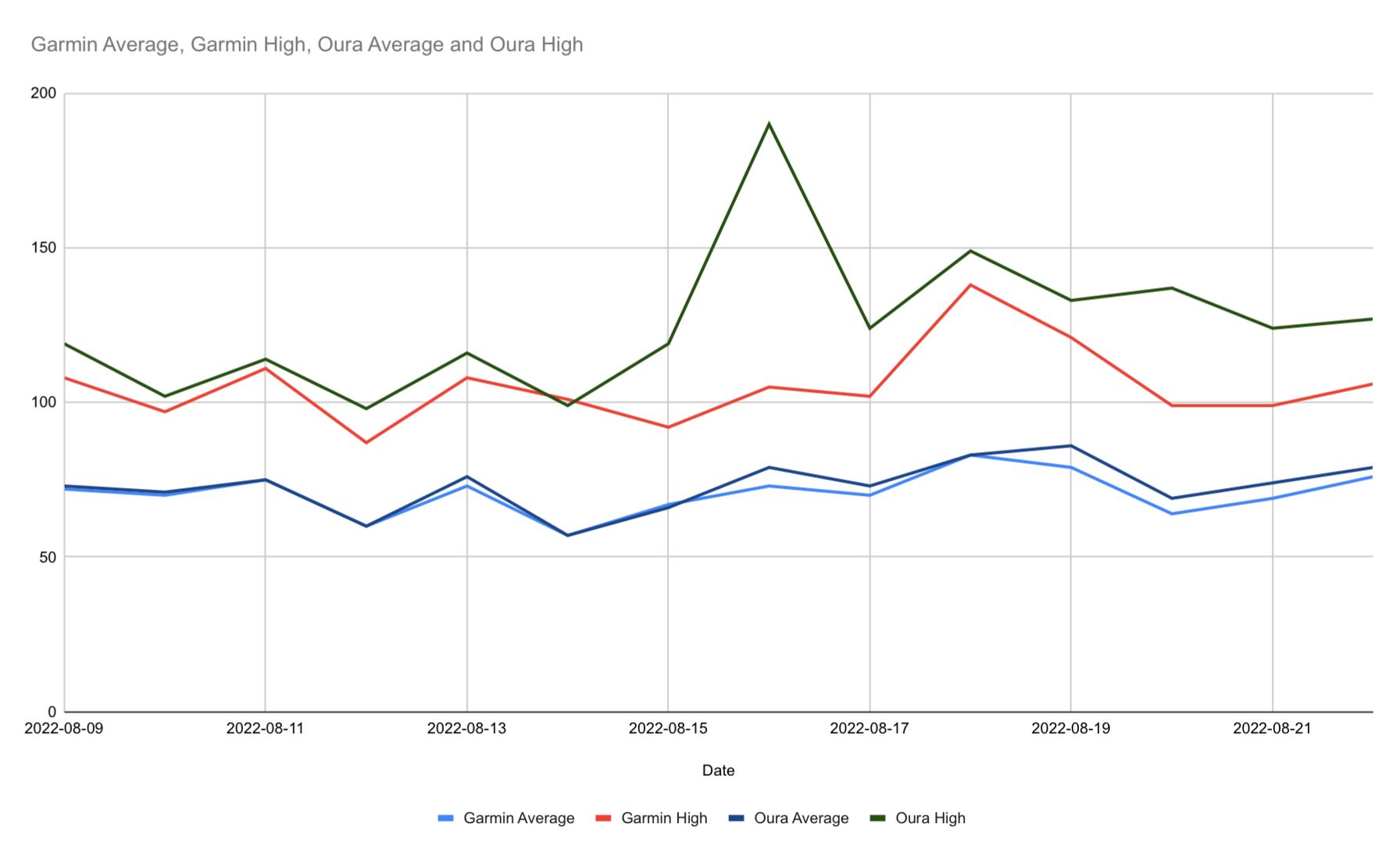
Aside from the obvious Oura/Garmin high discrepancy, the values follow a similar track, in the same way the daily graphs do: a very scientific 'close enough for my daily purposes'.
Having seen other discrepancies, I believe these occur when the ring believes it doesn't have a good fit and stops collecting data, as shown below:
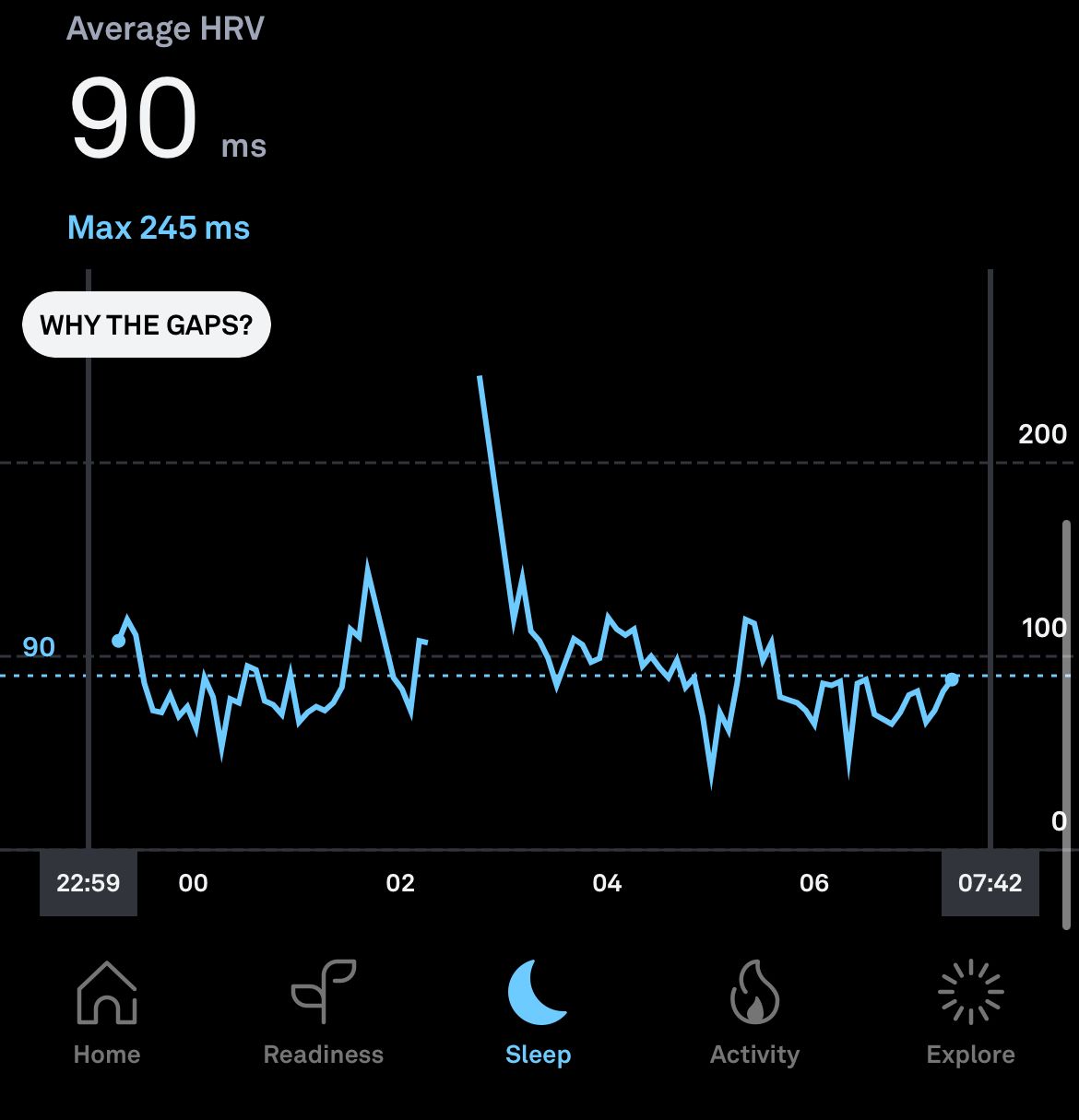
Garmin's high for the night was 115ms, and the average was 79ms, and aside from the pause in data collection on the ring's part, the two graphs look overly similar.
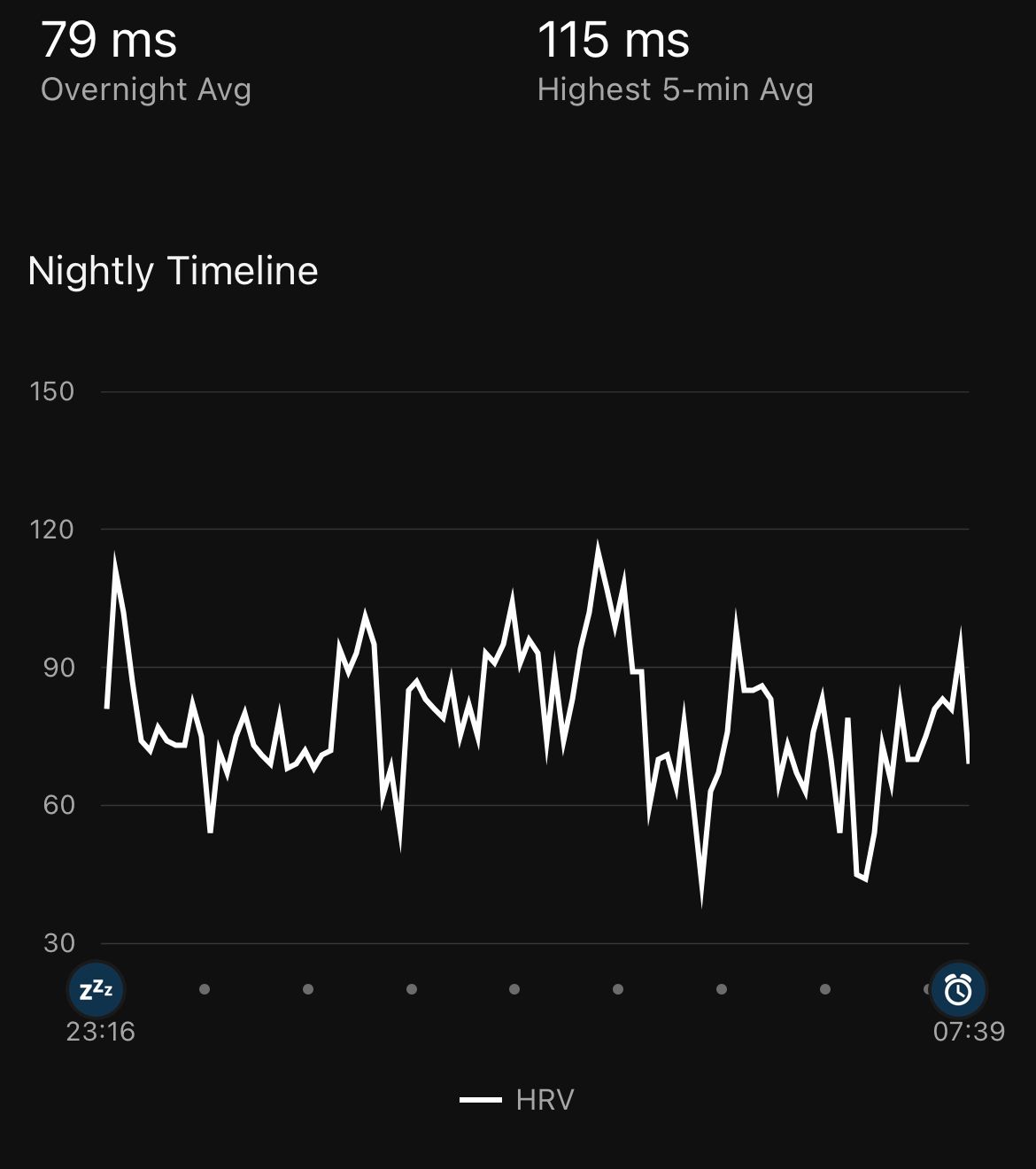
TL;DR? (Conclusion)
This trend gives me confidence in Garmin's HRV tracking, should I choose to stop using my Ōura.
Why continue using the Ōura?
The Ōura, and the Whoop too, both have one variable that Garmin doesn't track: body temperature. Having used the CORE sensor during training and COVID vaccinations, I see a value in these data as an indicator of overall health and readiness.

